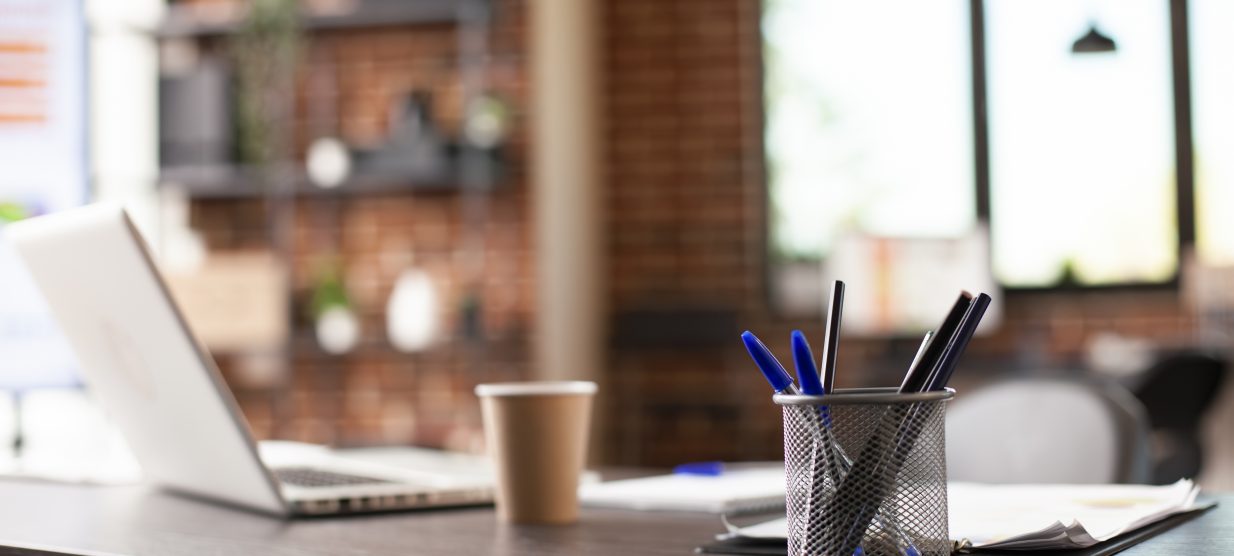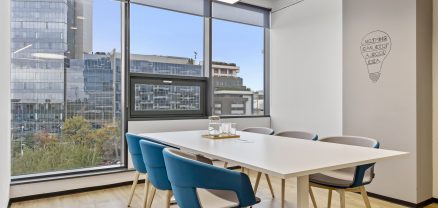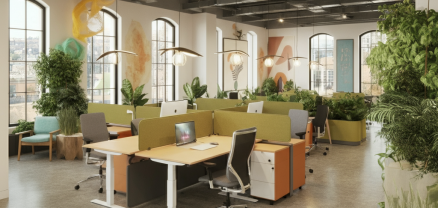The Evolution of Office Spaces: From Cubicles to Open Workspaces
Businesses across industries have long recognized the importance of thoughtfully-designed office spaces. From fostering productivity to creating collaborative environments, the evolution of office layouts reflects changing workplace dynamics. Understanding where we’ve been, how we’ve changed, and what lies ahead can help business owners, HR professionals, and workplace designers create spaces tailored to the future of work.
This post explores the history of office spaces, the rise of open-plan designs, the influence of coworking spaces, and emerging trends shaping future workplaces. By the end, you’ll have a comprehensive understanding of the workspace evolution and actionable insight for designing your own office.
A Brief Look at the History of Office Spaces
The history of office design began in the late 19th century, during the rise of white-collar work. Early office layouts mirrored industrial factories, with rows of desks organized for maximum efficiency. These spaces prioritized productivity but often disregarded individual comfort and creativity.
The Advent of the Cubicle
By the mid-20th century, office design experienced a significant transformation with the introduction of the cubicle. Created by designer Robert Propst in 1967, the “Action Office” system aimed to promote flexibility, privacy, and functionality. However, over time, the design was simplified into uniform rows of cubicles that became synonymous with monotony and isolation.
While the cubicle solved the need for personal workspaces, it often hindered communication and creativity, leading to dissatisfaction among employees. The shortcomings of this rigid layout highlighted the need for more collaborative and adaptable office designs.
The Beginning of Change
With the advent of creative industries in the late 20th century, workplaces began to shift. Companies like Apple and Google started prioritizing open collaboration and innovation, laying the groundwork for the next evolution of office environments.
The Shift to Open-Plan Offices
The late 1990s and early 2000s marked the rise of open-plan offices. By breaking down walls – both literal and figurative – businesses adopted an office layout designed to foster communication, collaboration, and transparency.
Open Office Benefits
The open-plan office promised several advantages, including:
- Enhanced Collaboration – Employees could interact freely, leading to quicker problem-solving and idea-sharing.
- Cost-Effectiveness – Open layouts required fewer walls, partitions, and lighting, making them a more economical choice.
- Adaptability – Open offices allowed flexible seating arrangements, often using hot desks or shared spaces to accommodate modern working styles.
Open layouts dominated industries seeking to break free from hierarchy and encourage employees to think creatively in shared spaces. However, the shift wasn’t without its drawbacks.
The Drawbacks of Open-Plan Offices
While the open-office revolution improved interaction, it also introduced challenges:
- Noise Distractions – The lack of physical barriers made quiet focus challenging.
- Lack of Privacy – Employees sometimes struggled to find private spaces for calls or concentrated work.
- Decreased Satisfaction – A 2018 Harvard study showed that employees in open-plan offices actually engaged in fewer face-to-face interactions, relying more on emails and messaging apps to communicate.
These shortcomings signaled the need for hybrid office designs that blended collaboration with private work areas.
The Impact of Coworking on Office Culture
Coworking spaces emerged as game-changers in office culture during the 2010s. Popularized by companies like WeWork, these spaces provided flexible, shared environments tailored to freelancers, startups, and small businesses.
The Serviced Office Revolution
Serviced office disrupted traditional work environments by offering:
- Flexibility – Both freelancers and businesses could access spaces without long-term commitments.
- Community – Shared workplaces fostered connections among individuals and companies.
- Amenities – Offerings like ergonomically-designed furniture, meeting rooms, and high-speed internet catered to varied professional needs.
Redefining the Office Experience
Spaces influenced larger enterprises as well. Many companies incorporated coworking elements such as informal lounges, breakout areas, and shared kitchens into their own offices to encourage collaboration and community within teams.
Future Trends in Office Layouts
Office design will continue to evolve dramatically as workplaces adapt to hybrid work models, advancements in technology, and evolving employee expectations. Here are some of the trends shaping the future of office environments.
Hybrid Workspaces
The surge in remote work during the COVID-19 pandemic drove the development of hybrid office layouts. These designs balance in-office collaboration with remote flexibility. Common features include:
- Hot Desking: Employees can work anywhere, with no assigned seating.
- Collaboration Areas: Group spaces designed for brainstorming and teamwork.
- Private Pods: Soundproof booths offer quiet areas for focused tasks or calls.
Biophilic Design
Biophilic design integrates natural elements like plants, natural light, and earthy materials into offices. Studies have found that exposure to greenery and daylight reduces stress and increases productivity, making biophilic design a growing priority for workplace designers.
Tech-Enabled Workspaces
Smart technology is playing a pivotal role in modern workspace evolution. Features like sensor-activated climate control, app-based room booking, and AI-powered lighting are transforming traditional offices into efficient, tech-enabled environments.
Wellness-Oriented Spaces
With greater focus on employee well-being, wellness-oriented offices are becoming the norm. Expect ergonomic furniture, standing desks, meditation rooms, and fitness facilities to feature prominently in future offices.
Customizable Furniture and Layouts
The demand for flexible office layouts is driving innovation in furniture design. Modular desks, foldable tables, and reconfigurable storage units allow organizations to adapt spaces quickly to the needs of both teams and individual employees.
Transform Your Space with Thoughtful Design
The evolution of office spaces – from cubicles to coworking and beyond – demonstrates the importance of designing environments that reflect changing needs. By understanding these trends and their implications, business owners, HR professionals, and workplace designers can craft layouts that foster productivity, innovation, and satisfaction.
If you’re ready to reimagine your office – or if you need expert guidance – connect with our design specialists today. Together, we can transform your workspace into a place that fuels success.
Cover: Freepik

Do not hesitate to contact us
Get in touch, if you have any question


